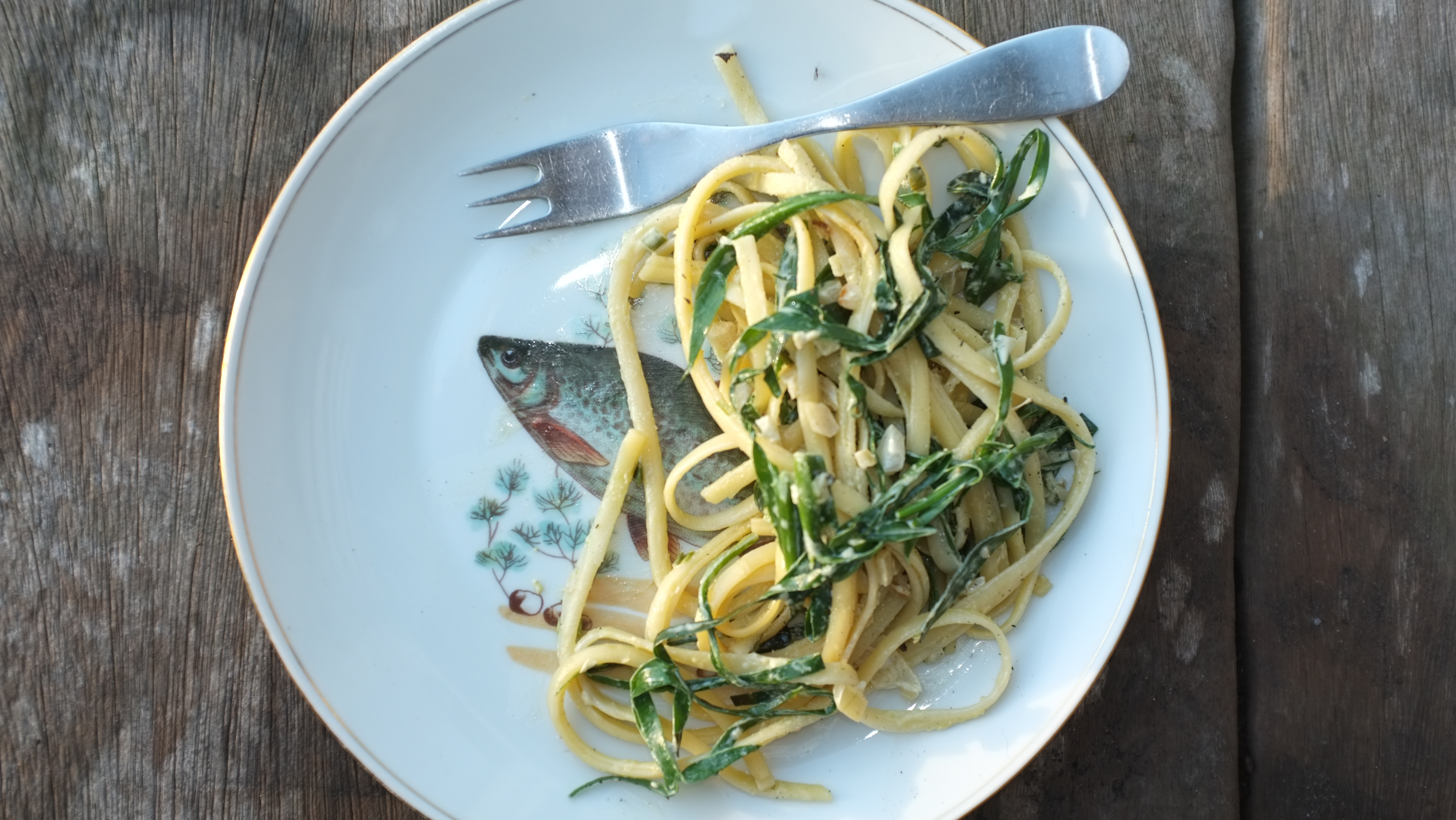It's always fun to find a rhyme or nonsensical thread of meaning by word associations – a pun in other words – when naming or describing something. It gets to the point where you do it on purpose... So when we conjure up dishes to enable folk to use some of the more abundant wild ingredients we work with, we are on the look out for catchy names – cheeky or silly even - which will get people' exploration of the unfamiliar off to a playful start. During one particular brain storming session re: simple and accessible ways of cooking with our favourite coastal wild green vegetable – sea aster - we came up with this one: Aster Pasta.
So there it was: the first ingredient of a dish - sea aster - and a name that provided the second – pasta. From here the further conception of the dish was guided by a simple principle I first learned many years ago from Jamie Oliver at his 15 restaurant. At this point I digress to mention that Jamie was our first London restaurant customer - quite fitting as 15 existed to give opportunities to marginalised youth and in this case was pivotal in giving an opportunity to many marginalised edible wild plants – often dismissed as weeds – and a boost to the self esteem of our fledgling wild food business! The simple principle I learned at 15 was as follows: Italian cooking is all about taking a small number of high quality ingredients, maybe as few as 3, and cooking them simply to great effect. In this sense, Italian cooking is possibly at the other end of the spectrum to the complex wizardry of some aspects of fine dining. Anyway, you can't get more quintessentially Italian than pasta (though pizza no doubt stands neck and neck) so in conceiving a new pasta dish, this principle marks out the territory.
We didn't get much further developing the dish that day but as I continued to mull upon possible uses for sea aster, I began to develop a hunch that cream would make a good partner for its succulent texture and tangy flavour. In the mean time Jo Robinson's's book, Eating on the Wild Side, had taught me that chopping or crushing garlic ten minutes before cooking allows an enzyme in garlic (which is destroyed by cooking) to trigger a reaction which produces the powerful anti-oxidant allicin. Allicin is something of a cure all, having amongst other things, anti cancer and anti bacterial properties. I was now primed to put a healthy dose of suitably prepared garlic in anything I cooked!
A rainy Monday soon afterwards conspired to bring the 4 afore mentioned ingredients together. My 8 year old daughter Ella was off school with a tummy ache and it fell to me to work from home and oversee her cosy sofa bound day-off school snuggled up with a book. A stomach soothing two cups of fennel tea later she announced she was hungry. It was around 11a.m. I looked up from my work to inquire as to just what it was she fancied. “Pasta!” came her prompt reply. “Pasta? I'm not cooking pasta at 11 a.m. Its not even lunch ti....” I petered off to rethink my pasta parameters because the following thought had popped like an idea whose time hadcome, into my mind: Aster Pasta!
Thus my glamorous but still slightly poorly kitchen assistant proceeded to the kitchen to cook. Ella started peeling garlic while I put the pasta (linguine) on first, as in spite of its high starch content, pasta turns into a low GI food once cooled. With this in mind, once the pasta was ready I drained it immediately then ran it under cold water. The aster can be (and was) a bit muddy so needed a bit of cleaning - best under warm water. I find a repurposed (dishwasher washed) toothbrush best for cleaning the chunky stalks. These I decided to finely chop the and fry with the garlic (ten minutes having elapsed). I stacked the flat leaf blades into piles of 8 and sliced them lengthways into thin strips to resembles the linguine pasta. This turned out to serve an unintended purpose in flavouring the dish... Next we got the pasta reheating with a bit of oil, then Ella added cream to the garlic, I introduced the aster, which was allowed to warm through for a just minute, then we married the everything together with the pasta.
The result was so tasty that Ella (tummy upset by now all but forgotten) consumed her portion and demanded more. And I began to doubt it could be that good in its own right: I had summer truffles in the same pan a few days earlier and wondered if the pan had not been adequately cleaned since. But a post pan scrubbing repeat of the dish for my wife Ali proved this theory mistaken - it appears that garlic, aster and cream are a match made in heaven and that cutting them into fine strips allows the maximum flavour release into the cream.

